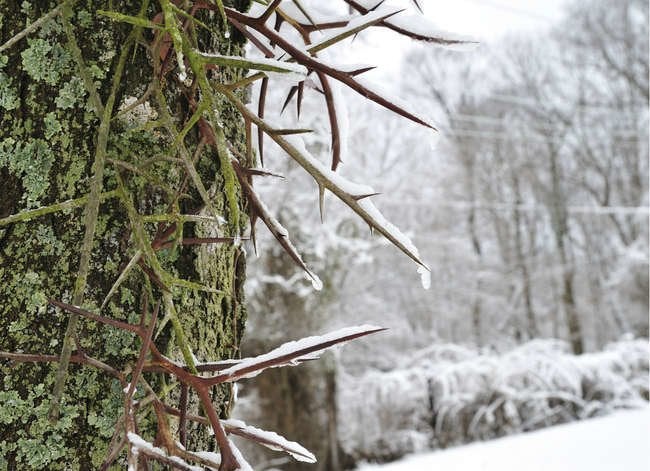

We may earn revenue from the products available on this page and participate in affiliate programs. Learn More ›
Steer Clear
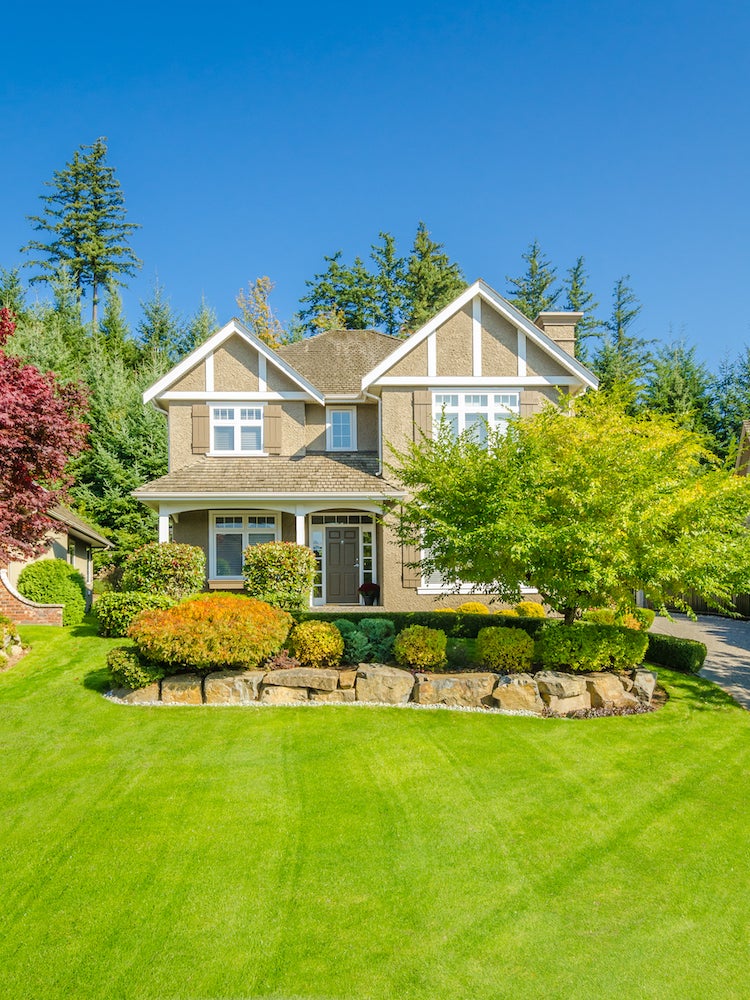
Mature trees add a lot of value to your property, boosting both your home’s price and your quality of life… but only if they are the right trees. When you make an investment in a tree, don’t inadvertently plant something that will become a maintenance headache or the eventual cause of a dispute with your neighbors. To play it safe, keep these 10 trees out of your landscaping plan.
Bradford Pear
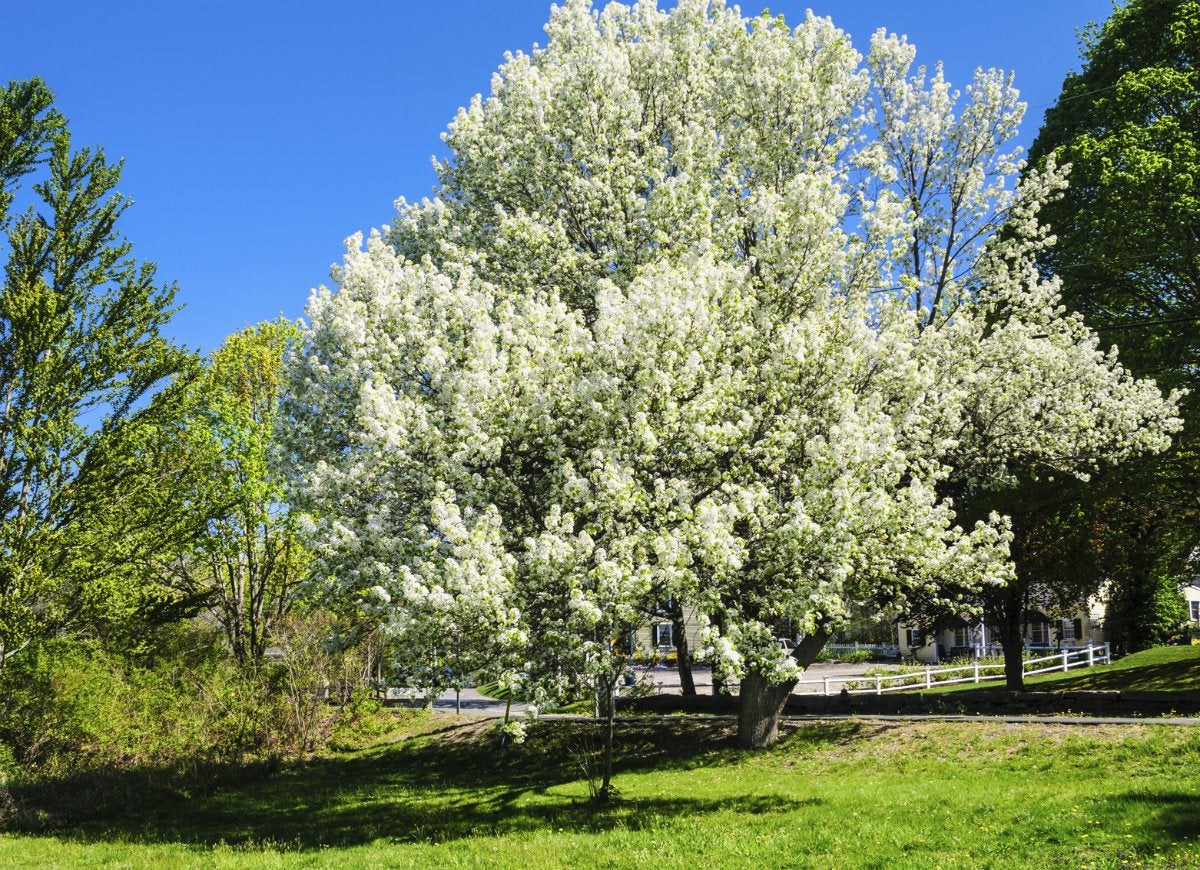
The Bradford pear has been a landscaping staple for decades because of its fast growth and beautiful display of white flowers. Pretty as their blooms are, they have an unpleasant smell. And the downside of fast-growing trees is that their wood is weaker, which means that the Bradford pear is easily damaged in wind and storms. You’ll be better off in the long term if you choose a different ornamental tree for your yard.
Related: 12 Expert Landscaping Ideas for the Front of the House
Honey Locust
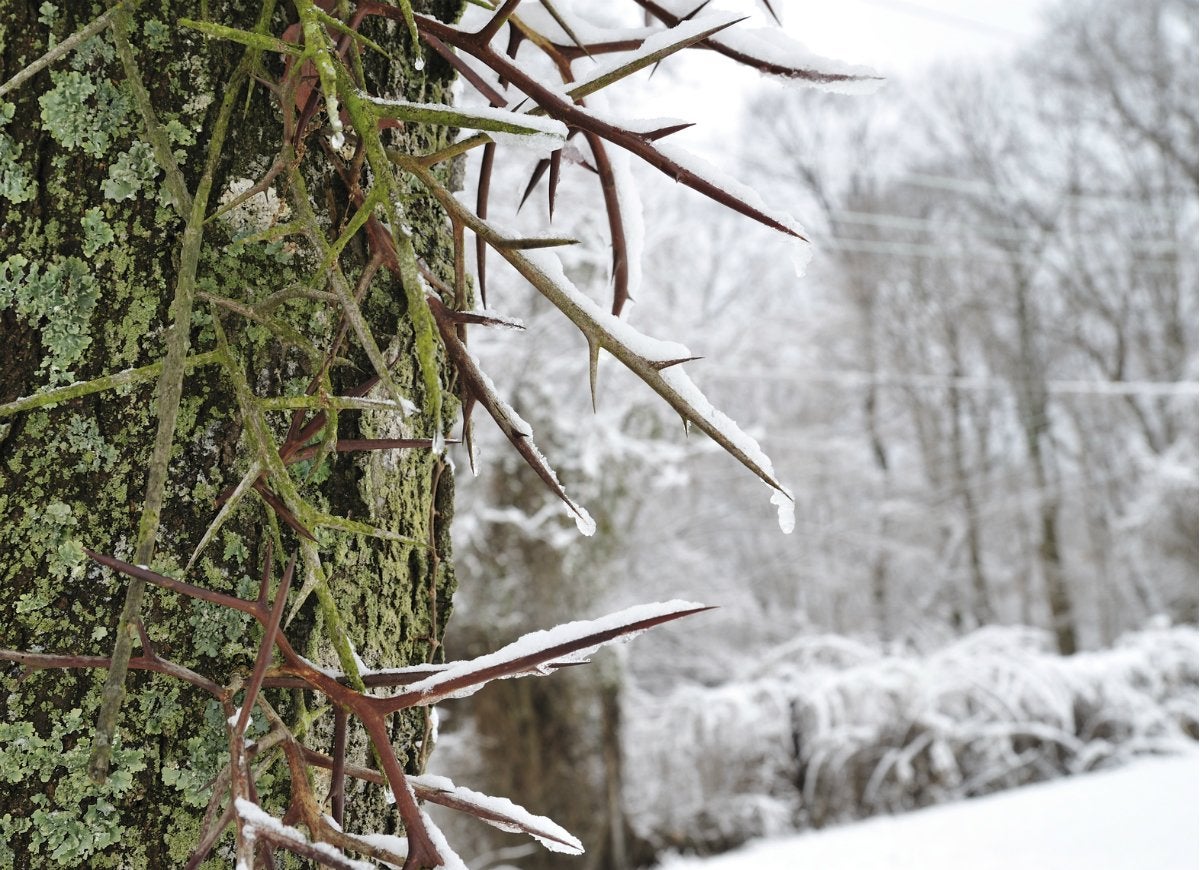
The honey locust has been used as a shade and street tree for many years, as it transplants well at large sizes and offers light shade without overwhelming turf grass. But it has developed several insect and disease problems over the years that make it short-lived. Another downside? The trunk grows thorns that can protrude up to 12 inches from the bark and make this tree difficult to maintain and work around in the garden. If you must have a honey locust, plant a thornless variety and monitor it closely for diseases and insect issues.
Related: 25 Easy-Care Plants That Survive With or Without You
Aspen
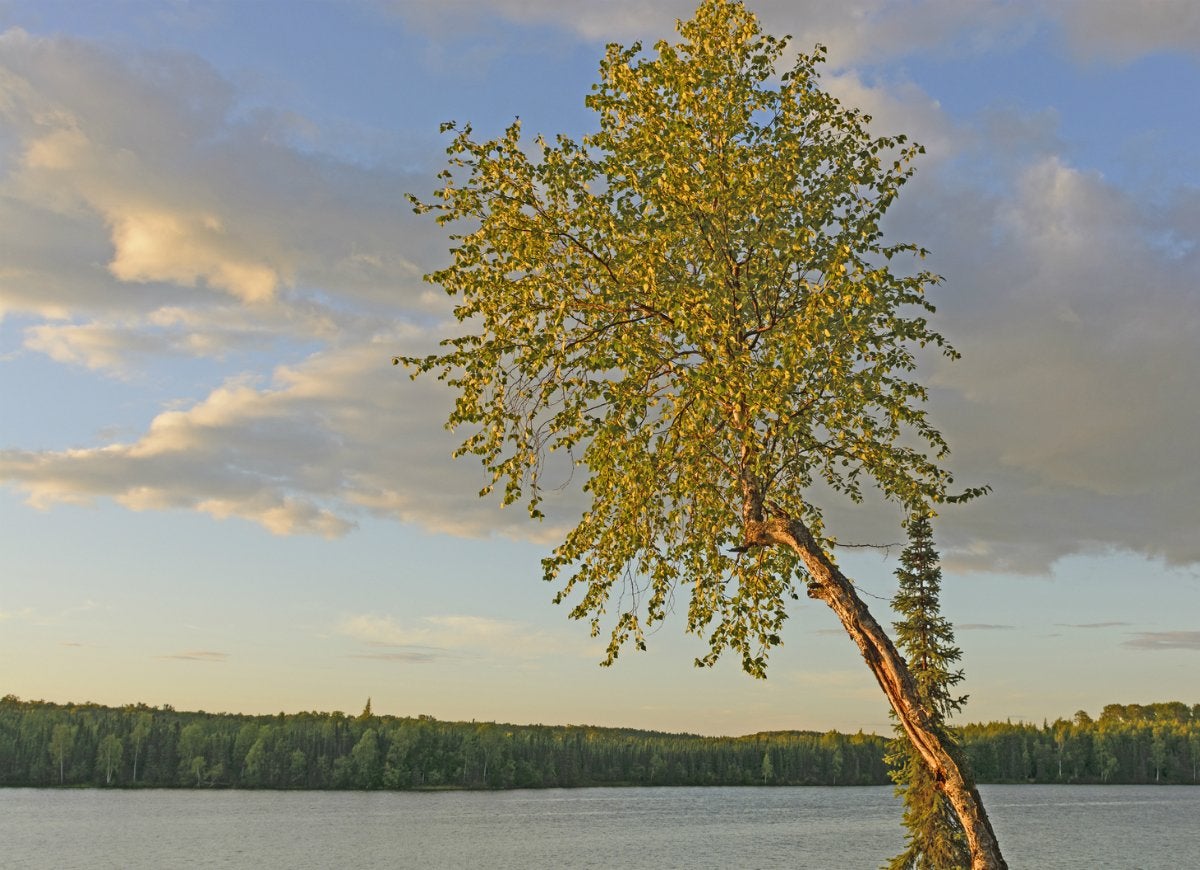
Quaking aspen trees have showy autumn foliage and attractive bark for winter landscapes. A single tree can spawn an entire grove with its weedy suckers, making it a potential maintenance nightmare if it’s planted in a small yard or too close to neighboring properties. It also suffers from several fungal diseases that can make it an eyesore. All in all, it’s best to enjoy these trees in alpine views from afar.
Related: 30 Plants That’ll Bring Color to Your Yard This Fall
Black Walnut
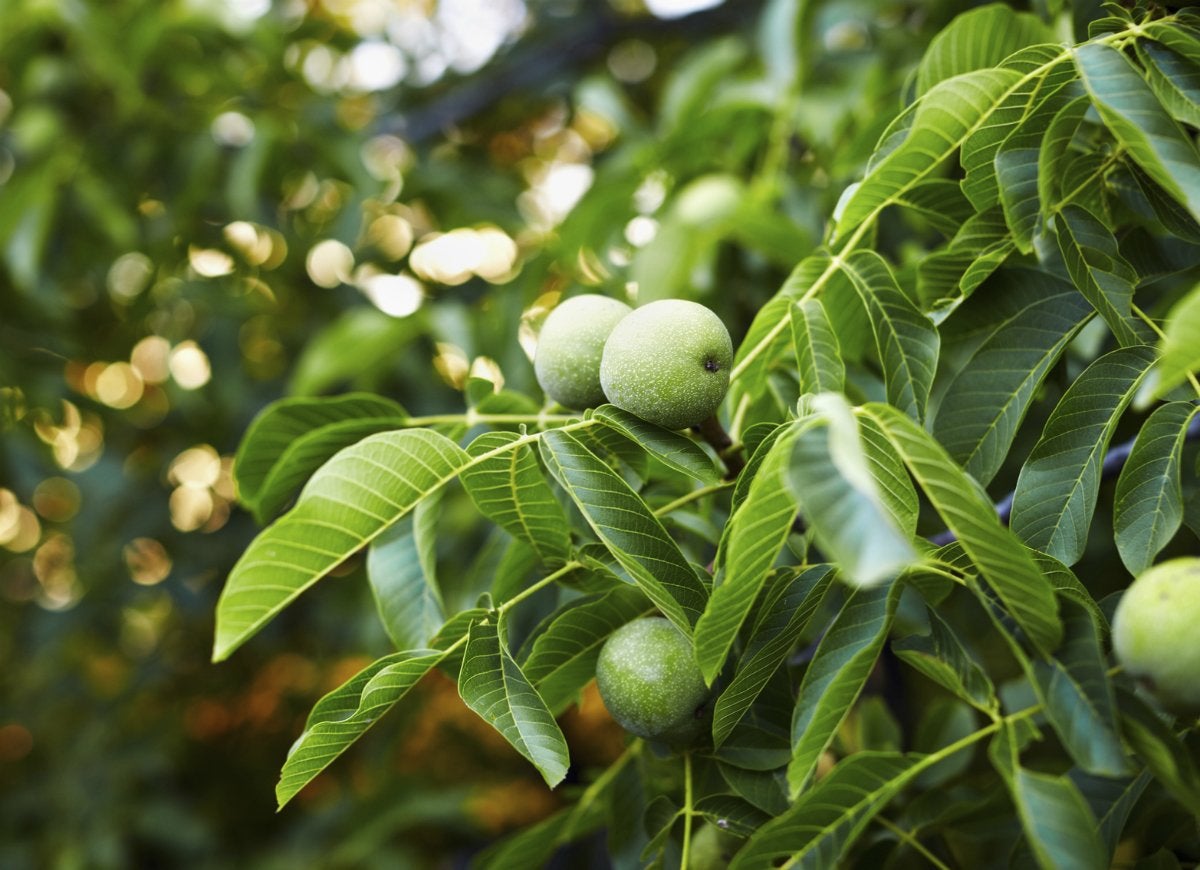
Black walnut is considered a valuable hardwood lumber, but in the home landscape, it’s a nuisance. Not only do the fallen nuts require constant removal, the tree produces a chemical called juglone, which is toxic to many other popular landscaping plants, such as hydrangeas, chrysanthemums, privet, lilac, and even tomatoes and peppers. Think twice before planting this grand shade tree.
Related: 10 Ways Your Backyard Can Hurt You
Ginkgo
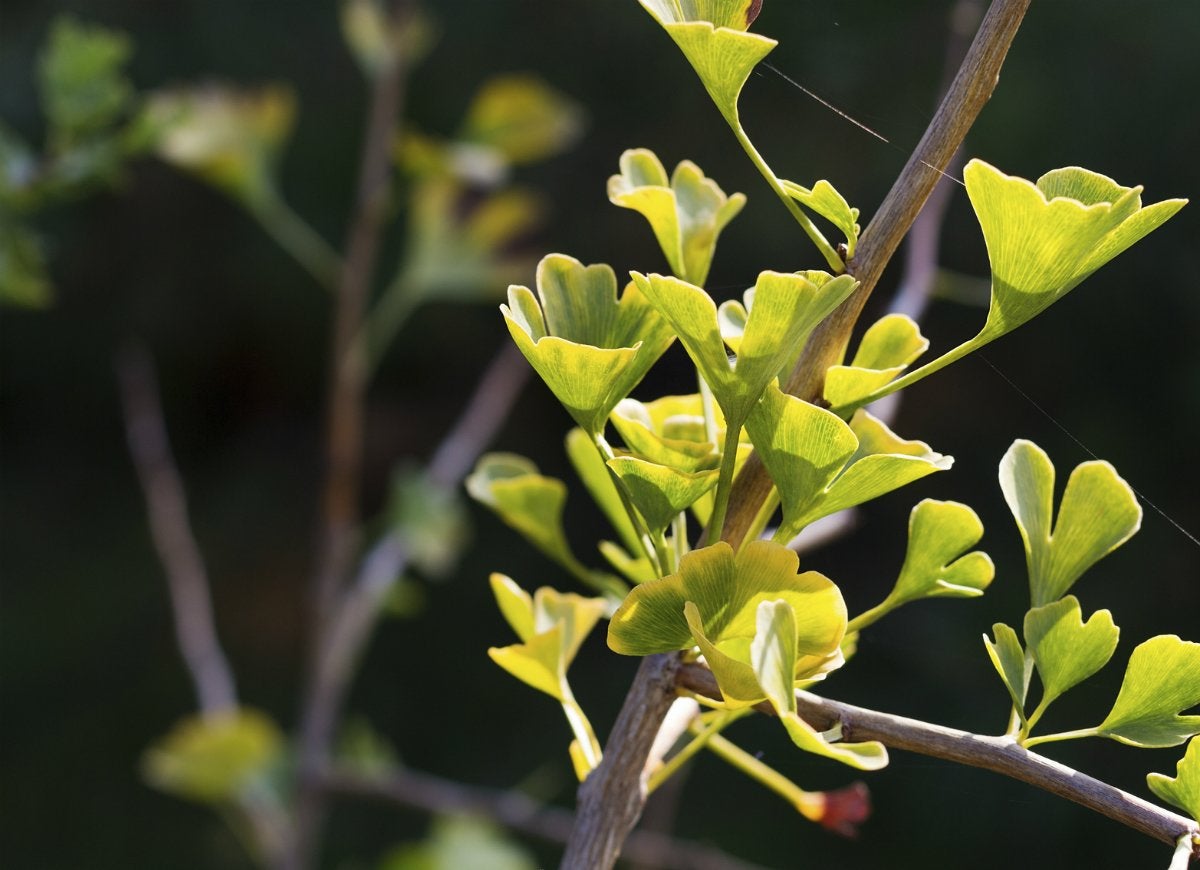
The ginkgo biloba is hardy and provides beautiful golden color in the fall. The female trees, however, drop fruits that not only are slippery, but also emit a very unpleasant odor. This tree is a maintenance migraine and is best avoided by homeowners.
Cottonwood
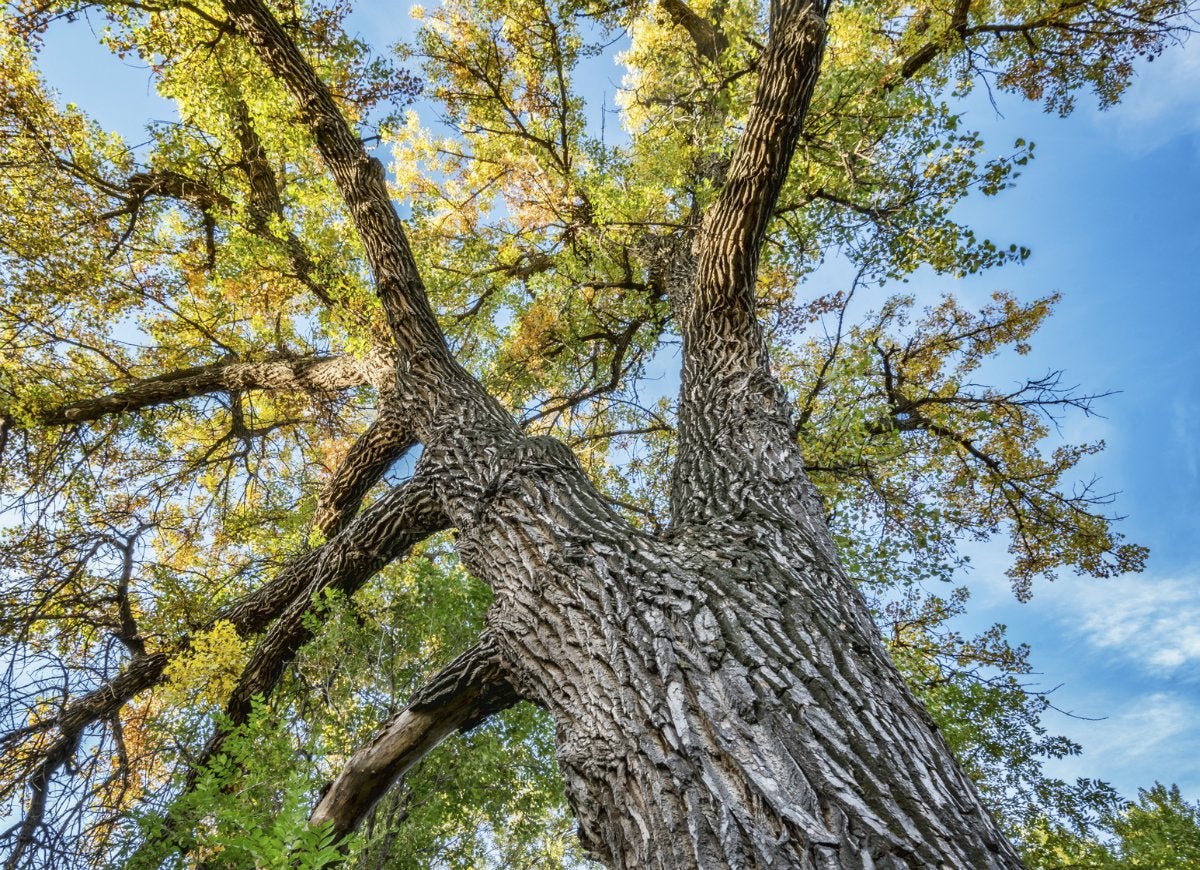
The cottonwood tree is fast-growing, spurting up as much as six feet a year. That rapid growth leads to weak wood, which makes it susceptible to limb breakage and damage from storms and wind. The female trees produce cottony covered seeds, leaving behind a big mess for homeowners to clean up. These trees are tall and impressive, but probably not worth the trouble in a garden-variety backyard.
Related: 10 Fast-Growing Plants for (Almost) Instant Curb Appeal
Mulberry
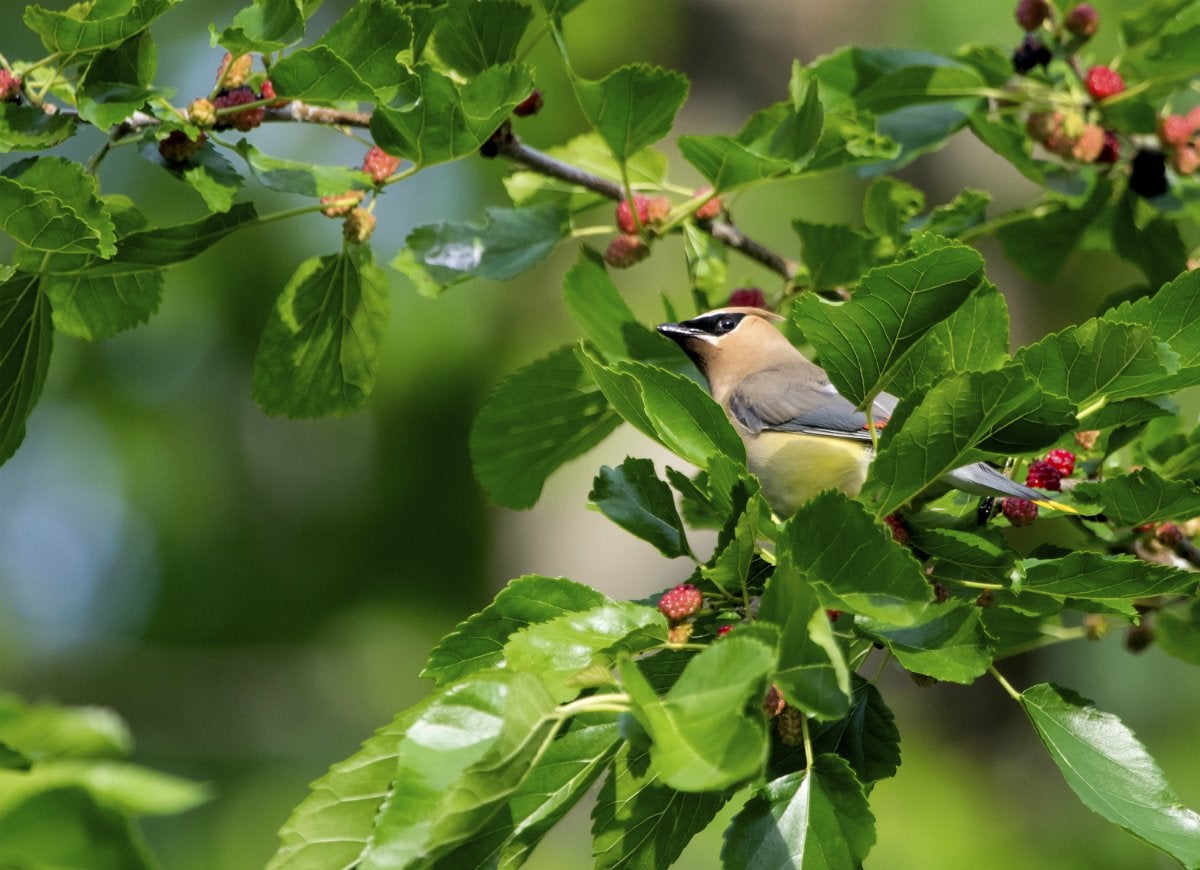
The mulberry tree was once considered desirable for its ornamental qualities and prolific fruiting—but not anymore! Its roots are large and shallow, and routinely cause damage to irrigation systems and house foundations. The falling fruit is messy and attracts an overabundance of birds, which leave their own variety of debris. Opt for a different ornamental if you are tree shopping for your landscape.
Mountain Cedar
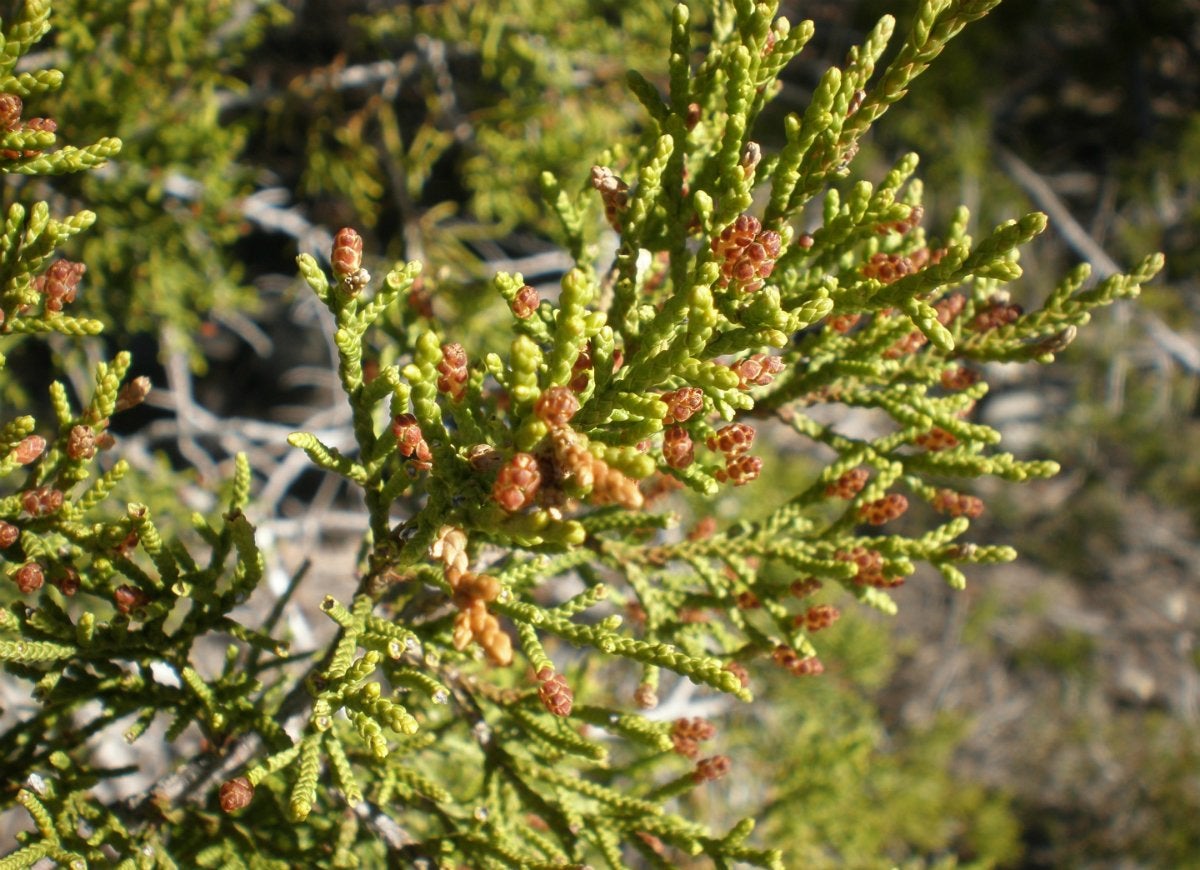
Allergy sufferers, beware! The mountain cedar, also known as the Ashe juniper, explodes with a preposterous amount of yellow pollen that induces sniffling, sneezing, itchy-eyed malaise for those afflicted with airborne allergies. Even if you don’t have allergies, you’ll rue the day you planted the mountain cedar when a literal cloud of yellow, dusty pollen envelops your porch, patio, and car daily come winter. Give this tree a hard pass.
Sweet Gum
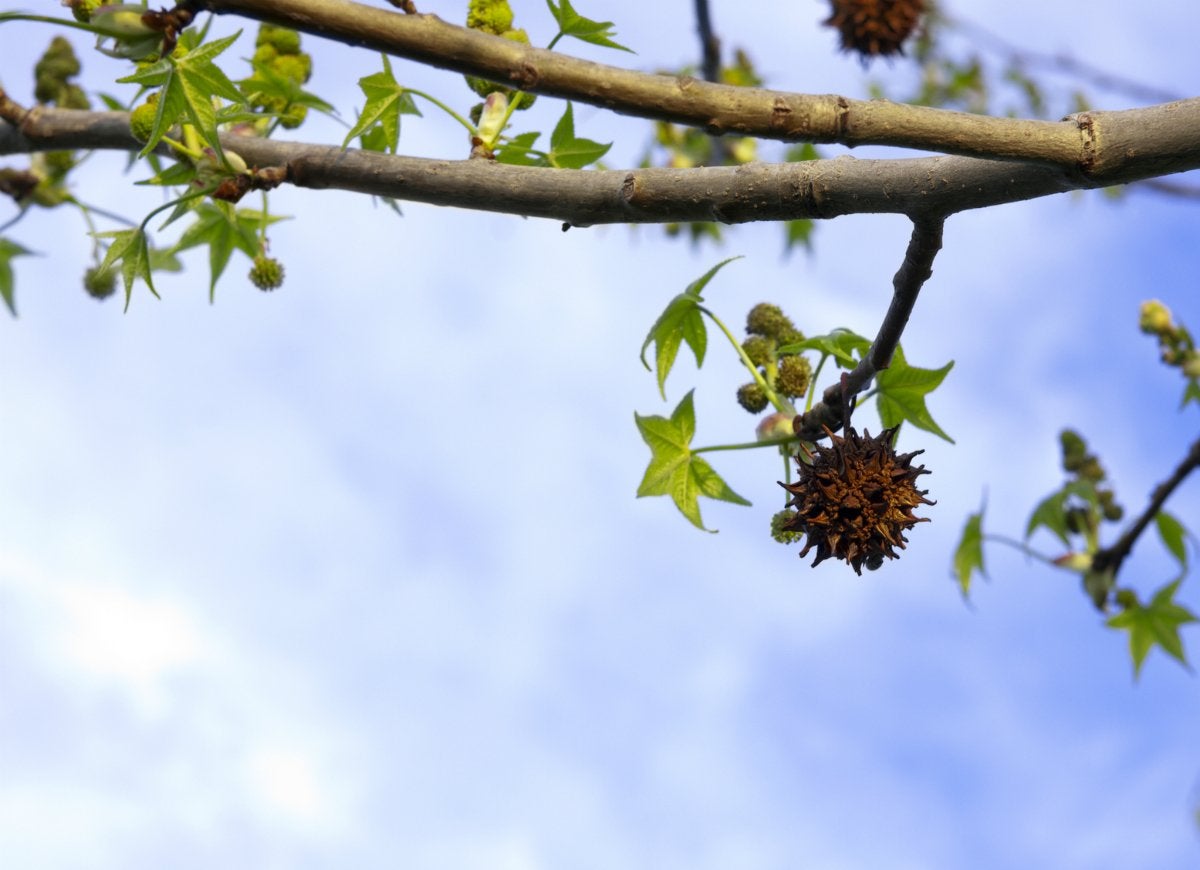
You may remember making Christmas ornaments as a child from the spiny balls of the sweet gum tree. Don’t let your feelings of nostalgia lure you into planting one, though. The sweet gum does have a lovely shape and brilliant autumn color. But those seedpods rain down by the hundreds, if not thousands, and are very difficult to rake up. This one is not for homeowners who want to spend less time working in the yard and garden.
Mimosa
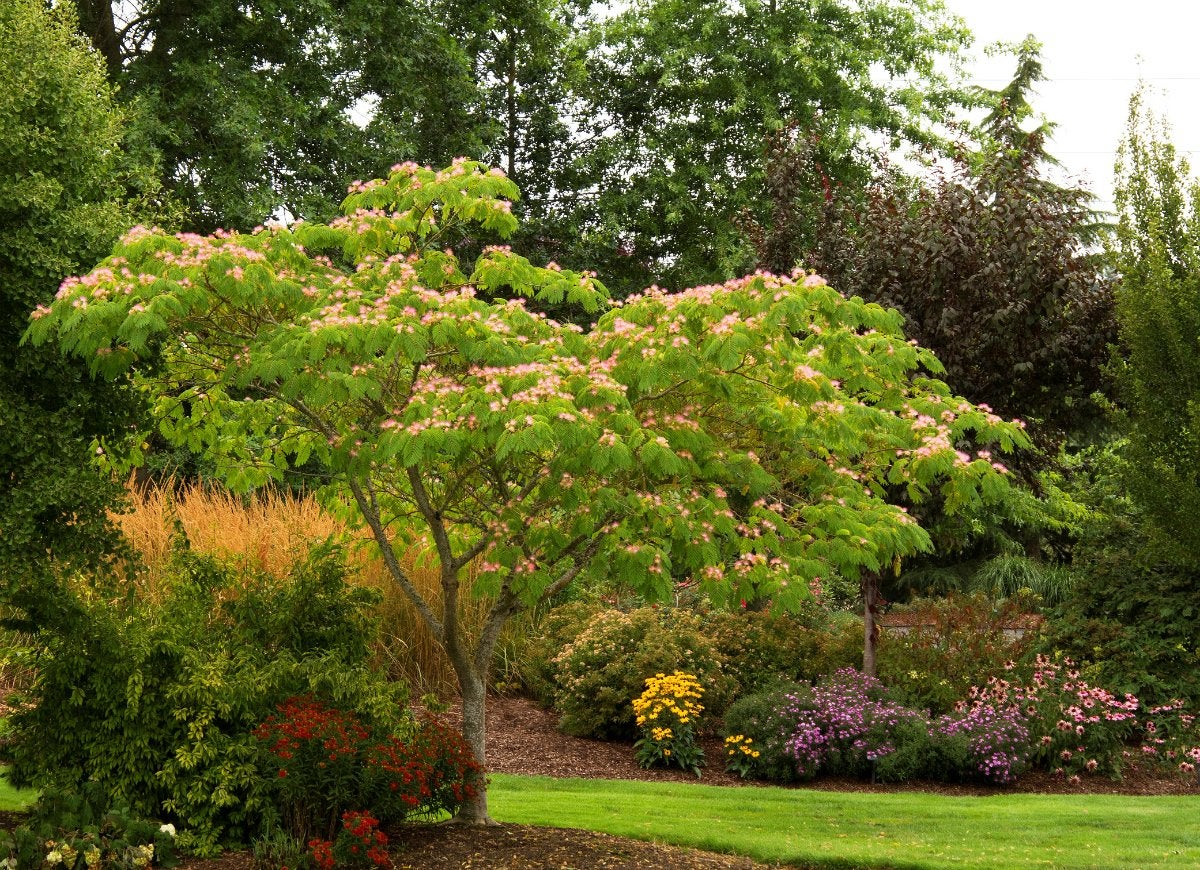
The fern-like foliage and feathery pink blossoms of the mimosa tree make it a visual stunner. It’s prolific along roadsides and waterways, especially in the South. That’s because it’s incredibly invasive. Plant one, and you’ll be pulling seedlings up constantly—and so will your neighbors.
Tree Troubles
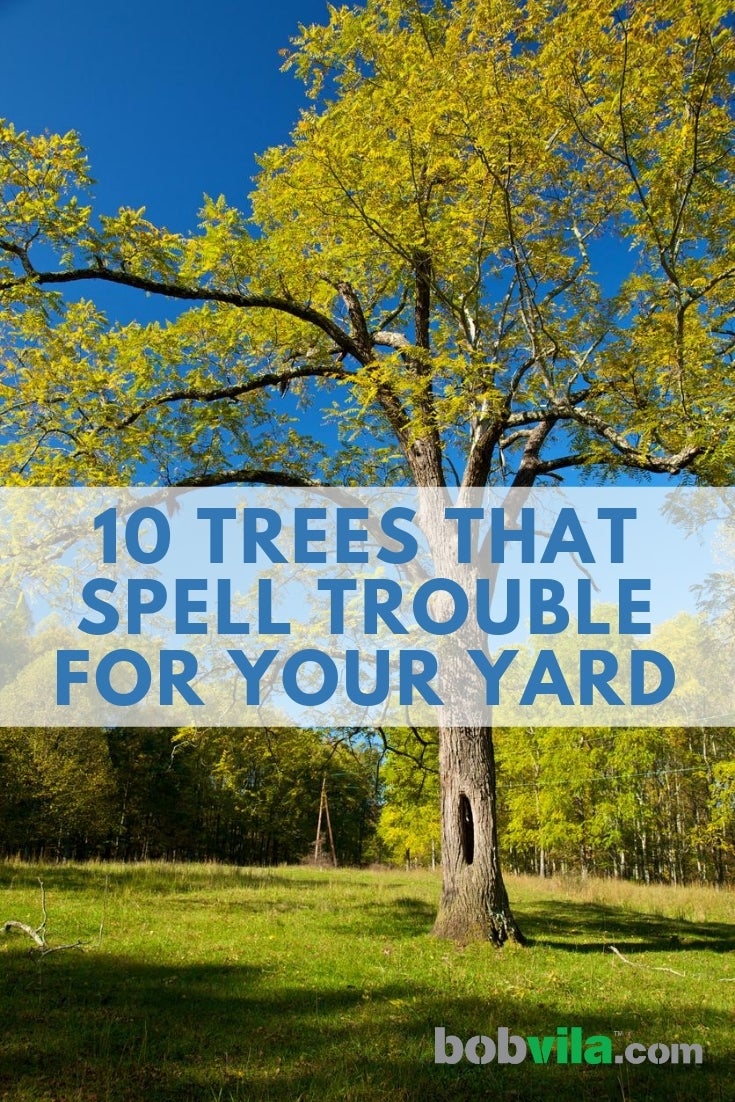
Trees aren’t exactly easy or cheap to remove. Before you decide to plant one in your yard, make sure it won’t cause any issues for you in the future.

Our Best Advice for Beginner Gardeners
We’ll help you set up your first garden—whether that’s a few pots on your patio, a raised bed, or an in-ground plot out back—and select the right plants for your soil and region.